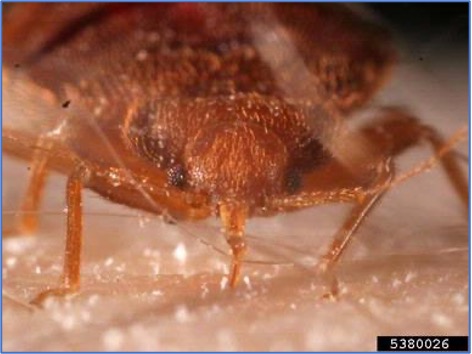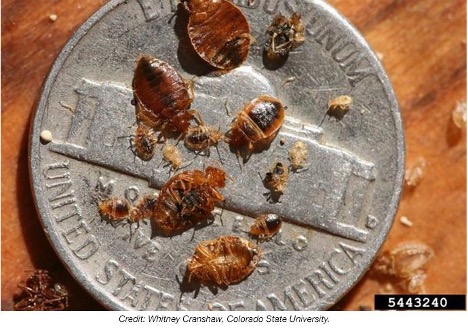
BED BUG ADULT FEEDING
“Don’t let the bed bugs bite!” is more than a nursery rhyme or slogan. It is a real-life issue that has affected 1 in 5 Americans. Centers for Disease Control and Prevention, United States Environmental Protection Agency and United States Department of Agriculture classify bed bugs as a public health pest, like mosquitoes and ticks. Their itchy bites can last for weeks, they have potential to cause severe allergic reactions, cost over $600 million a year, and an average of $1,000 per home to control in the United States. Bed bugs are found in every state due to the bed bugs’ quick development of resistance to pesticides, unfamiliarity of the insect by the public, and increased international travel.
The majority of home infestations happen from bringing them home after traveling so beware and be educated. Bed bugs are attracted to carbon dioxide, heat, and human scent. They will hitchhike on bags, clothes, socks, and shoes, so you must keep an eye out when traveling.
It is essential that every person know what bed bugs look like, as well as when and where to inspect for them. The insects look like flat ticks but have six legs, are oval, brown, and can get up to the size of an apple seed. Bed bugs are most active from midnight to 5 a.m. and shy away from movement by staying hidden. They usually live in their own filth, so look for their excrement and shed skins, especially in the seam of the mattress or under the mattress tag.


The following tips can help prevent and protect yourself, your family, and your home from bed bugs:
1. When you travel:
a. Pull back all sheets and check the mattress seam and tag, as this is where they typically hide.
b. Inspect behind the headboard, using a flashlight if necessary.
c. Never put any of your belongings on the floor. Put them up on a desk, luggage rack, or even in the bathtub. Bedbugs are weak clawed and can’t climb up smooth surfaces, however, they can climb up fabrics.
2. For your home:
a. Use an active or passive trap. These traps can be placed under bed frames or furniture legs. They will stop bed bugs from climbing up on you and are helpful home detectors.
b. Purchase a mattress encasement. This will exclude bed bugs from getting into your mattress or suffocate existing bed bugs that may be lurking inside.
c. If you bring bed bugs home on clothing, put the items in the dryer on the highest heat for 30 minutes to kill the bed bugs.
d. Never pick up trashed furniture: you could be bringing home some unwanted guests! Thoroughly inspect secondhand furniture before buying and bringing home.
e. If you have a home infestation, call a licensed pest control company for control.
Find out more at: https://www.fdacs.gov/Consumer-Resources/Health-and-Safety/Protect-Your-Home-from-Pests/Bed-Bugs






